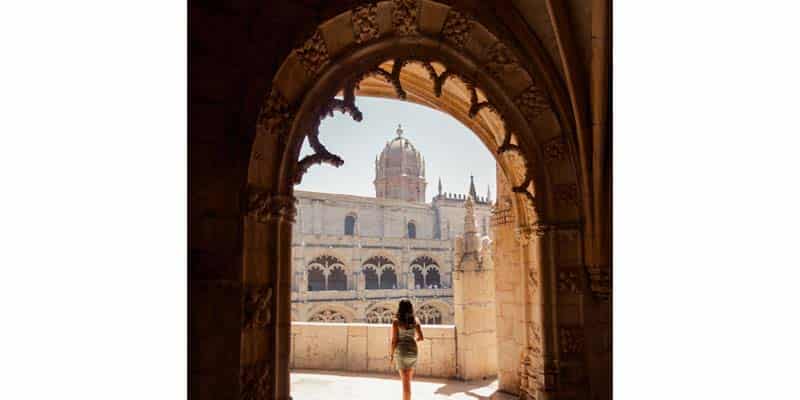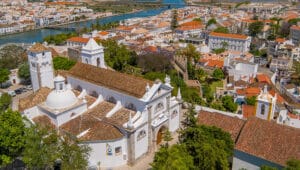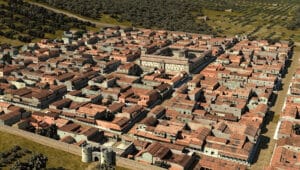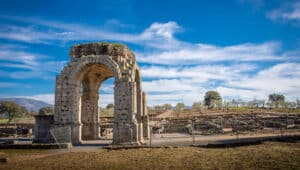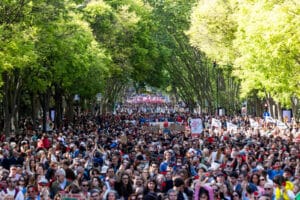Another Sunday, another monument! Having visited the Tower of Belém and the São Jorge Castle, it was now time to visit the Jerónimos Monastery. If you are a Portuguese resident, most museums and national monuments are now free every bank holiday and Sunday morning, normally from 10am until 2pm.
The Jerónimos Monastery, near the Tagus River in Belém, was built upon an old church known as the Hermitage of Restelo, where monks provided assistance to sailors in transit. It was in that very church that Vasco da Gama and his crew spent the night in prayer before their expedition to the Orient in 1497.
The monastery gets its name from the monks of the Order of Saint Jerome who used to dwell within its walls. Jerome was a fourth century scholar and one of the four doctors of the western church who ranked just below the apostles.
According to legend, a lion one day entered a monastery where Saint Jerome was residing, causing all the other monks to flee. However, Jerome noticed a thorn stuck in the lion’s paw and proceeded to remove it. After cleaning the wound and bandaging up the paw, the lion was forever grateful and from that day forth lived with Jerome inside the monastery.
Throughout history there are many ancient tales, citing the old trick of removing a thorn to tame a lion. Another example is the story of Androclus, a runaway slave who took shelter in a cave which turned out to be the den of a wounded lion. He removed a huge thorn from the lion’s paw and, years later, the lion recognised and spared Androclus, after he was condemned to be devoured by wild animals after being sent to Rome as a fugitive slave. Androclus was later pardoned in recognition of the power of friendship and was left in possession of the lion.
Near the entrance of the monastery’s former canteen where the monks would eat in utter silence whilst one of them read scriptures aloud for the rest to hear, there is an old fountain, known as the Lion Fountain, where the monks would wash up before eating. In the middle of the fountain, there is a statue of a lion sitting upright with his paw extended in recognition of the legend of Saint Jerome and it is said that if you make a wish whilst holding the lion’s paw, it will come true. Perhaps Vasco da Gama wished to be the first man to connect the Atlantic and the Indian Ocean, hence the West and the Orient. Or perhaps it was the monk’s spiritual guidance as they spent the day in prayer, praying for the good fortune of the valiant sailors and explorers on their expeditions. Either way, Vasco da Gama was the first European to reach India by sea.
Portuguese explorers were at the vanguard of European overseas explorations, discovering and mapping the coast of Africa, Asia, Canada and Brazil. Various forts and Portuguese trading posts were established along the coast of Africa and India extending Portuguese control of the Indian Sea.
In 1509, Portugal won the Sea Battle of Diu against the combined forces of the Ottoman Empire, the Venetian Republic, the Mamluk Sultanate, the Republic of Ragusa and several medieval kingdoms of India to rule over the Indian Sea. Following the battle, the Turks and Egyptians withdrew their navies from India leaving the seas for Portugal to dominate, which they did for almost a century, controlling the monopoly of the spice trade and thus sustaining the growth of the Portuguese Empire.
Construction of the Jerónimos Monastery had already begun in 1501, taking over 100 years to complete at the hands of several notable national and international architects and master builders.
Considered a milestone during the Age of Discovery, the monastery’s construction was financed by the profit made from the gold, spices and precious stones found in India. Accordingly, the monastery boasts Manueline architecture, named after D. Manuel I, the king of Portugal at the time, incorporating ornamentation inspired by other cultures, maritime elements and the representation of the discoveries by Portuguese voyagers.
Nowadays, the monastery is used as a pantheon and you will find the tombs of both Vasco da Gama and Luís de Camões, considered Portugal’s greatest poet, at the entrance of the church. Luís de Camões’ most famous work, The Lusiads, written in Homeric fashion, celebrates the Portuguese voyages of discovery during the 15th and 16th centuries and the discovery of the sea route to India by Vasco da Gama. Also, within the monastery you will find the tomb of the poet Fernando Pessoa and the celebrated historian Alexandre Herculano.
After exploring the monastery, I, of course, went to eat a Pastel de Belém or … two. Pastéis de Belém are the original traditional Portuguese custard cream tarts which were created by the monks of the Jerónimos Monastery. However, when the monastery was forced to close in 1834, the monks sold the recipe to businessman Domingos Rafael Alves and nowadays more than 20,000 of the infamous tarts are sold every day. They are one of my favourite treats and are still made exactly to the same secret recipe invented 185 years ago and which is still owned by the Alves family.
|| features@algarveresident.com
Jay recently graduated from the Faculty of Fine Artes in Lisbon. Jay’s interests are exploring new cultures through photography and the myths, legends and history that define them.



